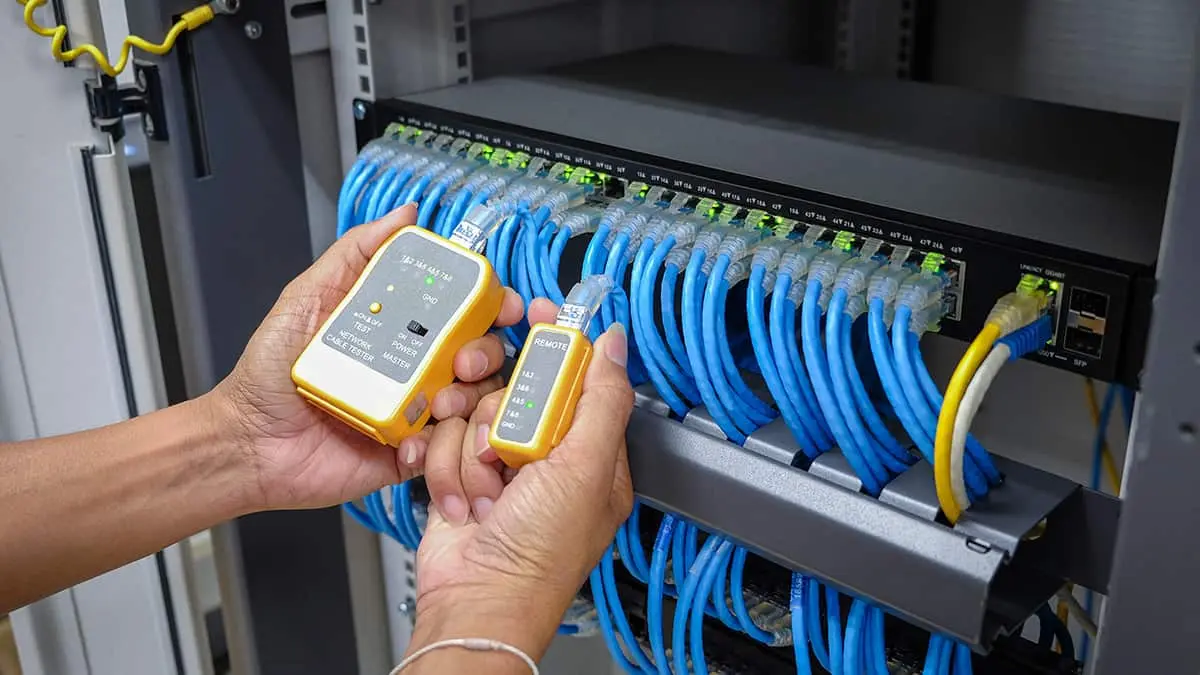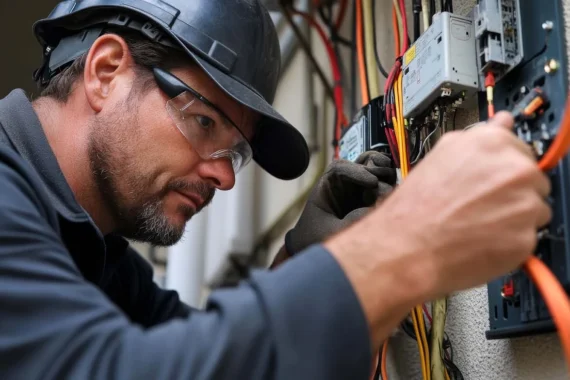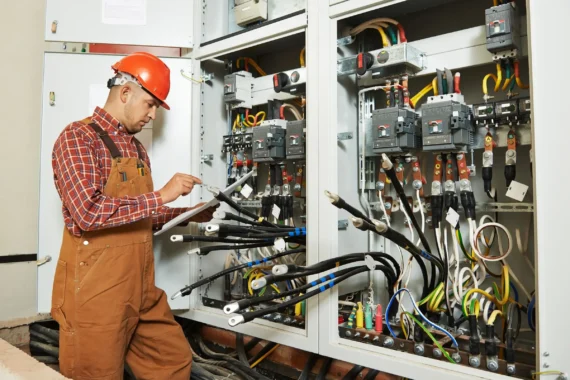Imagine your home responding to your needs before you voice them. Lights that adjust to your circadian rhythm, a thermostat that anticipates your comfort, security systems that stand vigilant without prompting. This isn’t science fiction—it’s the reality enabled by sophisticated electrical work. As our living spaces evolve into responsive ecosystems, the backbone of this transformation lies in expertly integrated electrical infrastructure. This guide illuminates how automation and control systems fuse artistry with engineering, turning ordinary dwellings into intuitive sanctuaries.
Keytakeaways:
- dvanced Wiring: Hybrid systems carry power and data (Cat6, fiber, shielded cables) via deep conduits for easy upgrades.
- Dedicated Power: Control hubs, PoE switches, AV equipment, and backup systems (UPS) need dedicated, reliable circuits.
- Protocol Integration: Electricians ensure compatibility (Zigbee, Z-Wave, Wi-Fi, Matter) and neutral wires for constant device communication.
- System-Specific Needs:
- Lighting: Neutral wires, load-calibrated dimmers, zoning.
- HVAC: C-wires, circuits for smart dampers/zoning.
- Security: Concealed wiring, PoE cameras, isolated circuits with backups.
- AV: Dedicated circuits, CL2 wiring, conduit for future-proof cabling.
- Energy Mgmt: Circuits for solar/batteries, smart panels, load sensors.
- Plumbing: Strategic outlets for leak detectors, circuits for pumps/valves.
The Digital Nervous System: Wiring Foundations for Electrical Work
Every automated gesture in a smart home flows through a meticulously planned electrical framework. Unlike traditional setups,electrical work demands foresight: concealed conduits for data cables, dedicated circuits for high-load devices, and structured panels that centralize control. Electricians now layer Cat6 Ethernet, fiber optics, and shielded wiring alongside conventional Romex, creating a hybrid nervous system that handles both power and data.
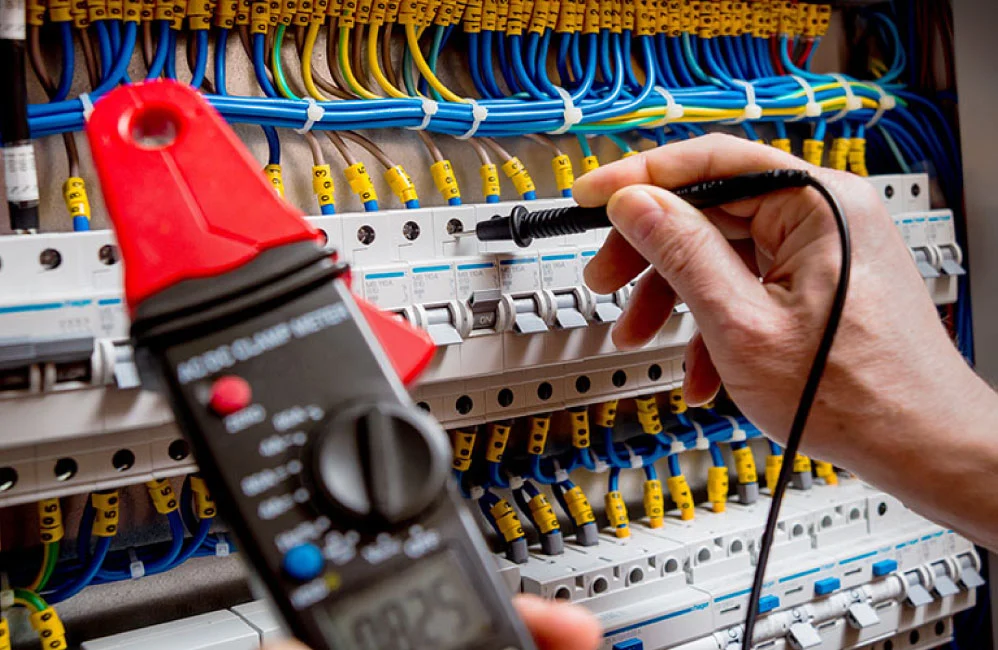
Moreover, future-proofing is paramount. Installing deep junction boxes, oversized conduits (“smurf tubes”), and accessible service panels ensures seamless upgrades. For instance, a homeowner might later add motorized blinds or EV chargers without invasive renovations. Consequently, the initial Electrical Work prioritizes scalability, transforming static walls into dynamic pathways for innovation.
Command Central: Control Systems as the Brain of Electrical Work
Control hubs are the cerebral cortex of your automated domain. Devices like Savant, Control4, or open-source platforms (e.g., Home Assistant) unify disparate systems—lighting, climate, audio—into a single interface. Crucially, these hubs require robust electrical work: dedicated 20-amp circuits for reliability, PoE (Power over Ethernet) switches for edge devices, and strategically placed touchscreens powered by hidden low-voltage wiring.
Furthermore, redundancy safeguards functionality. Electricians often integrate battery backups (UPS) into hub circuits, ensuring systems survive power fluctuations. For example, during an outage, security cameras and smart locks remain operational. Therefore, control system installation isn’t just about mounting sleek tablets; it’s about embedding fail-safes within the The Silent Symphony electrical work to guarantee uninterrupted command.
Luminous Logic: Smart Lighting Integration and Electrical Dynamics
Smart lighting transcends basic dimmers; it’s an orchestra of ambiance, efficiency, and security. Installing fixtures like Philips Hue or Lutron Caséta requires nuanced electrical work: neutral wires in switch boxes for constant communication, load-calibrated dimmers to prevent LED flicker, and zoning circuits that group lights by function (e.g., “Evening Relaxation” or “Morning Energize”).
Additionally, protocols matter. Electricians choose between Zigbee, Z-Wave, or Wi-Fi based on network load and latency needs. A Zigbee mesh network, powered by hardwired routers, avoids Wi-Fi congestion for near-instant response. Thus, lighting automation hinges not just on bulbs but on the electrical work that enables seamless, silent communication between switches and sensors.
Climate Intelligence: HVAC Automation’s Electrical Synergy
Modern HVAC systems like Ecobee or Nest learn your rhythms but demand specialized electrical integration. electrical work here includes installing C-wires (“common wires”) to provide continuous power to thermostats, upgrading furnace circuits to handle smart dampers, and embedding occupancy sensors that signal vents to open/close room-by-room.
Moreover, zoning systems exemplify synergy. Electricians wire dampers to individual circuit boards, allowing algorithms to direct airflow only where needed. For example, an empty guest room stays dormant, slashing energy use. This precision reduces utility bills by 20–30%, proving how electrical works turn climate control into both an art and a science.
Vigilant Voltage: Security Systems in Smart Home Electrical Work
Security thrives on uninterrupted power and stealth. Hardwired cameras, motion sensors, and smart locks need electrical work that conceals wiring in walls or attics while integrating with backup batteries. PoE cameras are ideal, drawing data and power from a single Ethernet line—simplifying maintenance and eliminating visible cords.
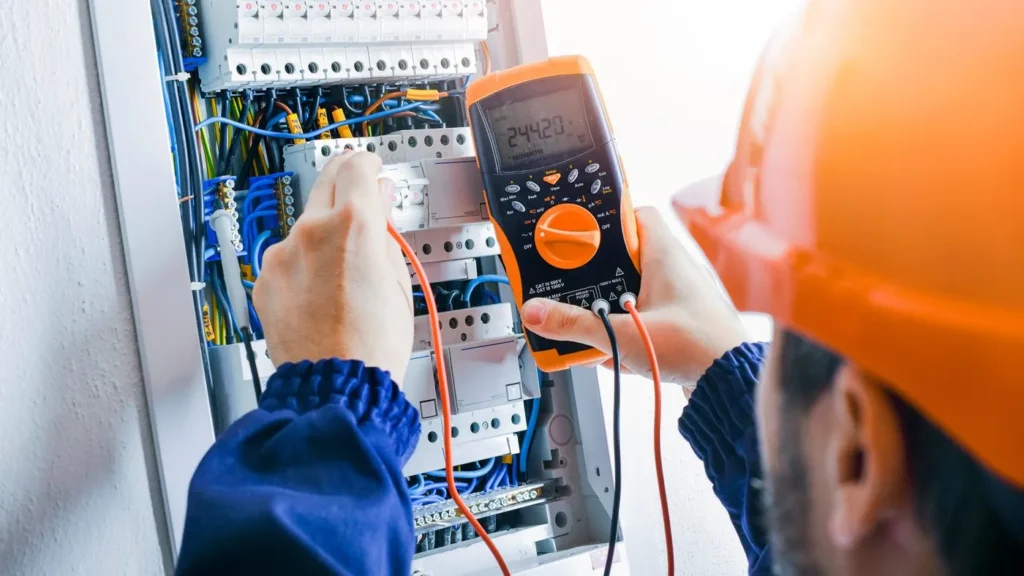
Similarly, alarm panels require isolated circuits to prevent tampering. Electricians often install recessed panels with cellular backups, ensuring alarms trigger even if Wi-Fi fails or wires are cut. Consequently, security-focused electrical work prioritizes both invisibility and invincibility, creating an impenetrable digital shield.
Sonic Architecture: Audio-Visual Systems’ Electrical Demands
Immersive audio and video hinge on clean power and infrastructure. Whole-home audio systems like Sonos Amp demand dedicated 15-amp circuits to prevent harmonic distortion, while in-wall speakers need CL2-rated wiring for fire safety. For projectors or motorized screens,electrical work includes recessed outlets in ceilings and structural reinforcements for vibration control.
Furthermore, HDMI over Ethernet (HDBaseT) transforms setups. Electricians run fiber-optic cables through conduits to support 8K video, avoiding signal degradation. This foresight ensures your theater evolves with technology. Thus, premium AV experiences are born not from gadgets alone but from the electrical work that makes them sing.
Energy Alchemy: Efficiency Systems in Electrical Work
Automation turns conservation into autopilot. Solar inverters, battery walls (e.g., Tesla Powerwall), and smart panels like Span.io require electrical work that balances grid, renewable, and backup sources. Electricians install current sensors on main lines, enabling real-time monitoring via apps to pinpoint vampire loads.
Additionally, automated load shedding proves revolutionary. During peak rates, systems dim lights or pause EV charging without human intervention. This requires subpanels with smart breakers communicating via Zigbee. As a result, electrical work transforms passive consumption into an active, money-saving dialogue with the grid.
Hydraulic Harmony: Plumbing Automation’s Electrical Ties
Even water systems join the automation ecosystem. Smart leak detectors (e.g., Moen Flo) need strategically placed outlets under sinks, while motorized valves require hardwiring to shut off water during breaches. Tankless water heaters, too, demand 240V circuits calibrated for variable load demands.
Moreover, recirculation pumps save water and time. Electricians wire them to motion sensors in bathrooms, triggering hot water flow as you approach the shower. This union of plumbing and electrical work showcases how automation’s reach extends beyond electrons to every element of comfort.
Future-Proofing Foundations: Scalability in Electrical Work
Technology evolves—but your wiring shouldn’t need constant reinvention. Forward-thinking electrical work employs modular components: service panels with spare breaker slots, conduit “pull strings” for easy cable additions, and universal protocol translators (e.g., Matter-over-Thread). Documenting circuits with digital schematics ensures future electricians understand the system’s logic.
Similarly, staged upgrades prevent obsolescence. Phase 1 might cover lighting and security, while pre-wiring for Phase 2 (e.g., motorized skylights) sits dormant until needed. This approach makes scaling affordable and non-disruptive. Ultimately, masterful electrical work isn’t just about today’s gadgets; it’s about building a canvas for tomorrow’s innovations.

